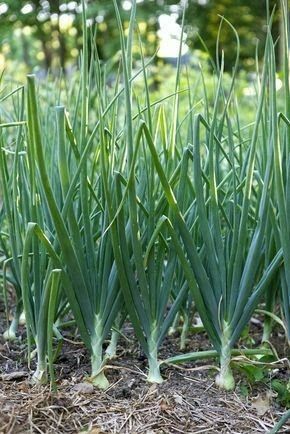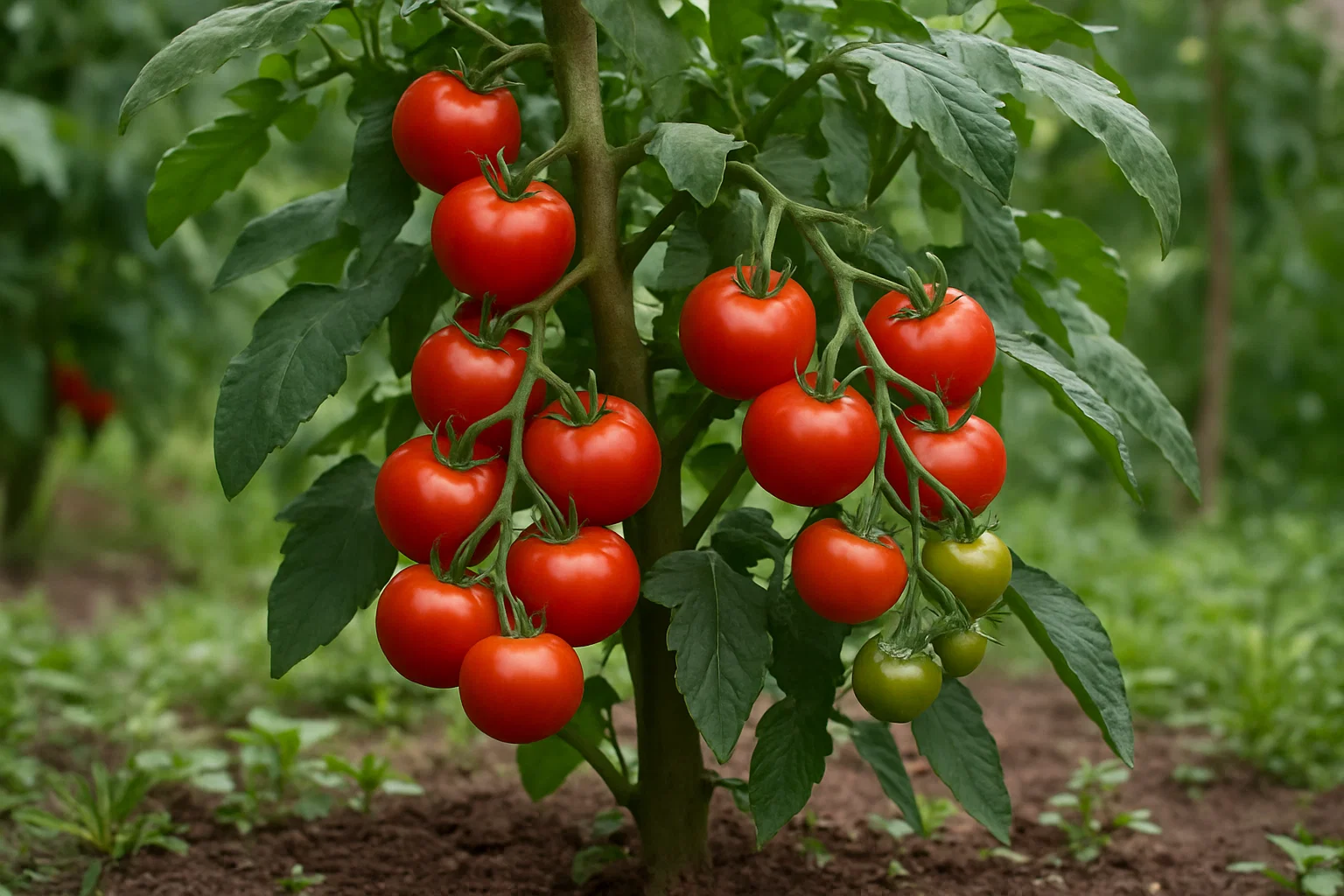Hydroponic Onion Farming: Transforming Agriculture with Smart Technology
Hydroponic Onion Farming,In the evolving landscape of agriculture, hydroponic onion farming emerges as a beacon of innovation and sustainability. By integrating hydroponic techniques with Smart Agriculture technologies, farmers can achieve remarkable advancements in productivity, resource efficiency, and environmental stewardship. This article delves into the synergy between hydroponics and Smart Agriculture, exploring how this combination transforms onion cultivation and paves the way for future farming practices.
Hydroponic Onion Farming represents a departure from traditional soil-based cultivation, offering a method where plants grow in a nutrient-rich water solution. This approach provides several advantages for onion farming, including enhanced growth rates, disease resistance, and resource efficiency.
Contents
- 1 Integration of Smart Agriculture in Hydroponic Farming
- 2 Benefits of Hydroponic Onion Farming
- 3 Objectives of Implementing Hydroponic Onion Farming with Smart Agriculture
- 4 Explanation of Smart Agriculture Technologies in Hydroponic Farming
- 5 Usefulness of Hydroponic Onion Farming
- 6 Advantages of Hydroponic Onion Farming with Smart Agriculture
- 7 Future Trends in Hydroponic Onion Farming
- 8 Challenges and Solutions in Hydroponic Onion Farming
- 9 Case Studies and Success Stories
Hydroponic Systems for Onions
Hydroponic systems are diverse, each suited to different types of crops and farming environments. For onions, specific hydroponic systems can be particularly effective:
- Nutrient Film Technique (NFT): This system maintains a thin film of nutrient solution that flows continuously over the roots. Onions benefit from NFT due to the constant supply of nutrients and oxygen, which promotes robust growth.
- Deep Water Culture (DWC): In DWC systems, onions are suspended in a nutrient-rich, oxygenated water solution. This method supports rapid growth and high yields, as the roots are constantly immersed in the nutrient solution.
- Ebb and Flow (Flood and Drain): This system periodically floods the root zone with nutrient solution before draining it away. It ensures that onions receive adequate nutrients and oxygen while minimizing the risk of waterlogging.
- Drip Systems: Nutrient solution is delivered directly to the root zone through drippers, allowing for precise control over nutrient application. Drip systems are well-suited for large-scale hydroponic onion farming.
Nutrient Solutions and pH Management
Effective nutrient management is crucial in hydroponic farming. Onions require a balanced mix of essential nutrients, including nitrogen, phosphorus, potassium, calcium, magnesium, and trace elements. Regular monitoring and adjustment of pH levels (ideally between 5.5 and 6.5) are essential for optimal nutrient uptake and plant health.
Integration of Smart Agriculture in Hydroponic Farming
Smart Agriculture refers to the use of technology to optimize farming practices. When applied to hydroponic onion farming, Smart Agriculture technologies enhance efficiency, precision, and overall farm management.
Sensor Technologies
Sensors play a pivotal role in Smart Agriculture by providing real-time data on various growing conditions:
- Nutrient Sensors: These sensors measure the concentration of essential nutrients in the solution, enabling precise adjustments to maintain optimal levels.
- pH Sensors: Monitoring pH levels ensures that the nutrient solution remains within the ideal range for onion growth.
- Temperature and Humidity Sensors: These sensors track environmental conditions, ensuring that the growing environment remains conducive to healthy plant development.
Automation and Control Systems
Automation systems streamline many aspects of hydroponic farming:
- Nutrient Delivery: Automated nutrient injectors adjust the concentration of nutrients based on sensor data, ensuring that onions receive the correct nutrient balance at all times.
- Lighting Control: Automated lighting systems regulate light intensity and duration, mimicking natural sunlight conditions and promoting photosynthesis.
- Climate Control: Automated climate control systems manage temperature, humidity, and ventilation, creating an optimal growing environment for onions.
Data Analytics
Data analytics tools process information collected from sensors to provide actionable insights:
- Growth Monitoring: Analytics tools track growth patterns and identify trends, helping farmers make data-driven decisions about nutrient management and environmental adjustments.
- Predictive Analysis: By analyzing historical data, predictive analytics can forecast potential issues such as nutrient deficiencies or pest infestations, enabling proactive measures.
Benefits of Hydroponic Onion Farming
Hydroponic onion farming, when combined with Smart Agriculture technologies, offers numerous benefits:
Increased Yield
Hydroponic systems optimize growing conditions, leading to faster growth and higher yields. Studies have shown that hydroponic onions can yield up to 30% more compared to soil-based cultivation, thanks to the efficient use of nutrients and space.
Resource Efficiency
Hydroponic farming uses up to 90% less water than traditional soil-based farming. The closed-loop system recycles water, reducing overall consumption and minimizing waste.
Reduced Environmental Impact
Hydroponic systems eliminate soil erosion and reduce the need for chemical pesticides, contributing to a more sustainable farming practice. The controlled environment also minimizes the risk of soil and water contamination.
Space Optimization
Hydroponic systems can be set up in various environments, including urban areas, greenhouses, and indoor facilities. This versatility allows for efficient use of space and enables year-round production.
Enhanced Crop Quality
The controlled environment in hydroponic systems results in onions with consistent size, color, and flavor. This uniformity can lead to higher market value and consumer satisfaction.

Objectives of Implementing Hydroponic Onion Farming with Smart Agriculture
Enhancing Productivity
One of the foremost objectives of integrating Smart Agriculture technologies into hydroponic onion farming is to significantly boost productivity. Productivity enhancement involves optimizing every aspect of the growing process to ensure that onions grow faster, healthier, and yield more compared to traditional farming methods.
Optimizing Growing Conditions
Smart Agriculture technologies provide precise control over the growing environment. Sensors and automated systems regulate critical factors such as light, temperature, humidity, and nutrient delivery. For instance, LED grow lights can be adjusted to mimic the natural light spectrum and provide the optimal light intensity for onion growth.
Advanced Nutrient Management
Nutrient management is another key area where Smart Agriculture technologies excel. Hydroponic systems rely on a nutrient-rich solution to provide essential elements for plant growth. Advanced nutrient delivery systems, equipped with sensors, monitor the concentration of nutrients and adjust them in real time based on the plant’s needs.
Space Efficiency
Hydroponic systems, particularly vertical farming and stacked trays, allow for more efficient use of space compared to traditional soil-based farming. Smart Agriculture technologies enhance this efficiency by enabling precise control over plant spacing, light distribution, and environmental conditions. This maximizes the use of available space, allowing for higher plant densities and, consequently, greater production volumes.
Improving Resource Management
Efficient resource management is crucial for sustainable farming and is a primary goal of integrating Smart Agriculture technologies into hydroponic onion farming. By precisely managing water, nutrients, and energy, farmers can reduce waste, lower costs, and minimize environmental impact.
Water Conservation
One of the most significant advantages of hydroponic farming is its efficient use of water. Hydroponic systems recycle water through a closed-loop system, drastically reducing water consumption compared to traditional soil-based farming. Smart Agriculture technologies further enhance water management by using sensors to monitor moisture levels and adjust irrigation schedules accordingly.
Nutrient Efficiency
The precise control offered by Smart Agriculture technologies extends to nutrient management. Nutrient sensors measure the concentration of essential elements in the solution, allowing for real-time adjustments to maintain optimal nutrient levels. This precision reduces the risk of nutrient runoff, which can be harmful to the environment.
Energy Optimization
Energy consumption is another critical factor in resource management. Hydroponic systems often require significant energy for lighting, climate control, and water pumps. Smart Agriculture technologies help optimize energy use by automating these processes based on real-time data. For example, energy-efficient LED lights can be programmed to provide the optimal light spectrum and intensity, while climate control systems can adjust temperature and humidity levels only when necessary.
Promoting Sustainability
Sustainability is a core objective of modern agriculture, and hydroponic farming, when combined with Smart Agriculture technologies, aligns well with global sustainability goals. By reducing environmental impact and conserving resources, hydroponic onion farming supports long-term agricultural viability.
Reducing Environmental Impact
Hydroponic farming minimizes soil erosion and degradation, as it does not rely on traditional soil-based cultivation. Additionally, the closed-loop water system reduces the risk of water pollution and runoff. Smart Agriculture technologies further support environmental sustainability by reducing the need for chemical inputs.
Conserving Resources
The efficient use of water and nutrients in hydroponic systems conserves valuable resources. By recycling water and precisely managing nutrient delivery, hydroponic farming minimizes waste and reduces the overall consumption of these critical inputs. This resource conservation is particularly important in regions facing water scarcity or environmental degradation.
Promoting Eco-Friendly Practices
Hydroponic farming systems can be designed to incorporate eco-friendly practices, such as using renewable energy sources and recycling materials. For example, solar panels can power hydroponic systems, reducing reliance on fossil fuels. Additionally, the use of biodegradable or recyclable materials for growing trays and other components further supports sustainability efforts.
Advancing Technological Adoption
Implementing Smart Agriculture technologies in hydroponic onion farming promotes innovation and encourages the adoption of advanced farming practices. This progress contributes to the modernization of the agricultural sector and the development of new farming techniques.
Driving Innovation
The integration of Smart Agriculture technologies into hydroponic farming fosters innovation by pushing the boundaries of traditional farming practices. Technologies such as AI-driven analytics, advanced sensors, and automated systems drive continuous improvement and development in hydroponic farming methods.
Explanation of Smart Agriculture Technologies in Hydroponic Farming
Sensor Technologies
Sensors provide critical information for managing hydroponic systems:
- Nutrient Sensors: Ensure that the nutrient solution is balanced and provides the necessary elements for optimal onion growth.
- pH Sensors: Help maintain the ideal pH range, preventing nutrient lockout and ensuring healthy plant development.
- Environmental Sensors: Track temperature, humidity, and light levels, allowing for adjustments to create the perfect growing environment.
Automation Systems
Automated systems enhance efficiency and consistency:
- Nutrient Delivery Automation: Adjusts nutrient concentrations based on real-time data, reducing the risk of over- or under-fertilization.
- Lighting Automation: Regulates light exposure to mimic natural conditions, promoting optimal photosynthesis and growth.
- Climate Control Automation: Maintains stable temperature and humidity levels, creating a consistent environment for onion cultivation.
Data Analytics
Data analytics tools transform raw data into actionable insights:
- Growth Analysis: Monitors plant growth and identifies patterns, allowing farmers to optimize nutrient and environmental conditions.
- Predictive Maintenance: Forecasts potential issues such as nutrient deficiencies or equipment failures, enabling timely interventions and minimizing downtime.

Usefulness of Hydroponic Onion Farming
Hydroponic onion farming is valuable for several reasons:
Increased Efficiency
The efficiency of hydroponic systems translates into faster growth cycles and higher yields. This increased efficiency helps meet the growing demand for onions while optimizing resource use.
Enhanced Quality
Controlled growing conditions result in high-quality onions with consistent characteristics. This quality assurance can lead to premium prices and increased market competitiveness.
Reduced Risk of Disease
The absence of soil reduces the risk of soil-borne diseases and pests, minimizing the need for chemical treatments and promoting healthier crops.
Year-Round Production
Hydroponic systems allow for year-round onion production, regardless of external weather conditions. This continuous production capability ensures a steady supply of onions to meet market demands.
Advantages of Hydroponic Onion Farming with Smart Agriculture
Scalability
Hydroponic systems are highly scalable, allowing farmers to adjust production levels based on demand. Whether for small-scale urban farming or large-scale commercial operations, hydroponics offers flexibility and adaptability.
Cost-Effectiveness
Although initial setup costs may be higher, the long-term savings on water, nutrients, and labor contribute to cost-effectiveness. The increased yield and reduced resource use further enhance the economic viability of hydroponic farming.
Market Competitiveness
High-quality, consistently produced onions can command premium prices in the market. Hydroponic farming’s efficiency and product quality enhance competitiveness and appeal to discerning consumers.
Environmental Benefits
Hydroponic farming minimizes water use, reduces chemical inputs, and eliminates soil erosion. These environmental benefits contribute to a more sustainable and eco-friendly farming practice.
Future Trends in Hydroponic Onion Farming
As technology advances, hydroponic onion farming is poised for continued innovation and growth. Several emerging trends are expected to shape the future of this farming method:
Integration of Artificial Intelligence (AI)
AI and machine learning are becoming increasingly relevant in agriculture. In hydroponic onion farming, AI can analyze vast amounts of data from sensors to predict plant health, optimize nutrient delivery, and even automate complex farming tasks. For instance, AI algorithms can identify patterns in growth data to provide recommendations for improving yield and quality.
Development of Advanced Hydroponic Systems
New hydroponic system designs are being developed to further enhance efficiency and productivity. Innovations such as vertical farming systems, which stack hydroponic trays to maximize space, are gaining traction. These systems can significantly increase production capacity in urban environments where space is limited.
Sustainable Nutrient Management
Hydroponic Onion Farming,Future developments in hydroponic farming will likely focus on sustainable nutrient management. Research into organic hydroponic solutions and the use of renewable resources for nutrient delivery could reduce dependence on synthetic fertilizers and further minimize environmental impact.
Enhanced Climate Control Technologies
Advancements in climate control technologies will enable even more precise management of growing conditions. Innovations such as smart greenhouses equipped with advanced HVAC systems, climate sensors, and automated controls will improve efficiency and optimize growing environments for hydroponic onions.
Challenges and Solutions in Hydroponic Onion Farming
Hydroponic Onion Farming,While hydroponic onion farming offers numerous benefits, it also faces several challenges. Addressing these challenges effectively is crucial for the continued success and adoption of this farming method.
High Initial Investment
One of the primary challenges is the high initial investment required for setting up hydroponic systems. This includes the cost of equipment, infrastructure, and technology.
Solution: To mitigate this, farmers can seek financial assistance through grants, subsidies, or investment programs dedicated to innovative agriculture. Additionally, exploring modular systems that allow for phased investments can make the initial setup more manageable.
Technical Expertise Requirements
Hydroponic farming requires specialized knowledge and skills in managing nutrient solutions, environmental controls, and technology systems.
Solution: Providing comprehensive training and education for farmers is essential. Partnerships with agricultural extension services, technical schools, and industry experts can offer valuable resources and support. Online courses and workshops can also help build technical expertise.
Potential for Disease and Pest Issues
Although hydroponic systems reduce the risk of soil-borne diseases, they are not immune to other types of pathogens and pests. High humidity and closed environments can sometimes exacerbate issues.
Solution: Implementing integrated pest management (IPM) strategies and maintaining rigorous sanitation protocols can help prevent and control disease and pest problems. Regular monitoring and early intervention are key to managing these issues effectively.
Data Security and Privacy
As hydroponic systems become increasingly connected and data-driven, concerns about data security and privacy arise. Protecting sensitive information from unauthorized access and cyber threats is crucial.
Solution: Employing robust cybersecurity measures, including encryption and secure data storage solutions, is essential. Additionally, ensuring that technology providers adhere to strict data protection standards can help safeguard against potential breaches.
Case Studies and Success Stories
Hydroponic Onion Farming,Examining successful implementations of hydroponic onion farming provides valuable insights and inspiration for others considering this method.
Urban Hydroponic Farms
Several urban hydroponic farms have successfully integrated hydroponics and Smart Agriculture to produce high-quality onions. For example,how hydroponics can be used in a city setting to produce fresh onions year-round. Their use of vertical hydroponic systems and AI-driven climate control has set a benchmark for urban agriculture.
Large-Scale Commercial Operations
implemented hydroponic onion farming on a large scale, achieving impressive results in yield and resource efficiency. Their use of advanced automation and data analytics has optimized production processes and reduced operational costs. This success story highlights the potential for large-scale adoption of hydroponic systems in commercial farming.
Hydroponic onion farming, combined with Smart Agriculture technologies, represents a transformative approach to modern agriculture. By leveraging advanced systems and data-driven insights, farmers can achieve higher yields, optimize resource use, and contribute to a more sustainable food production system. As technology continues to evolve, the integration of hydroponics and Smart Agriculture will play an increasingly vital role in shaping the future of farming. Embracing these innovations not only addresses current agricultural challenges but also sets the stage for a more resilient and efficient agricultural sector.




